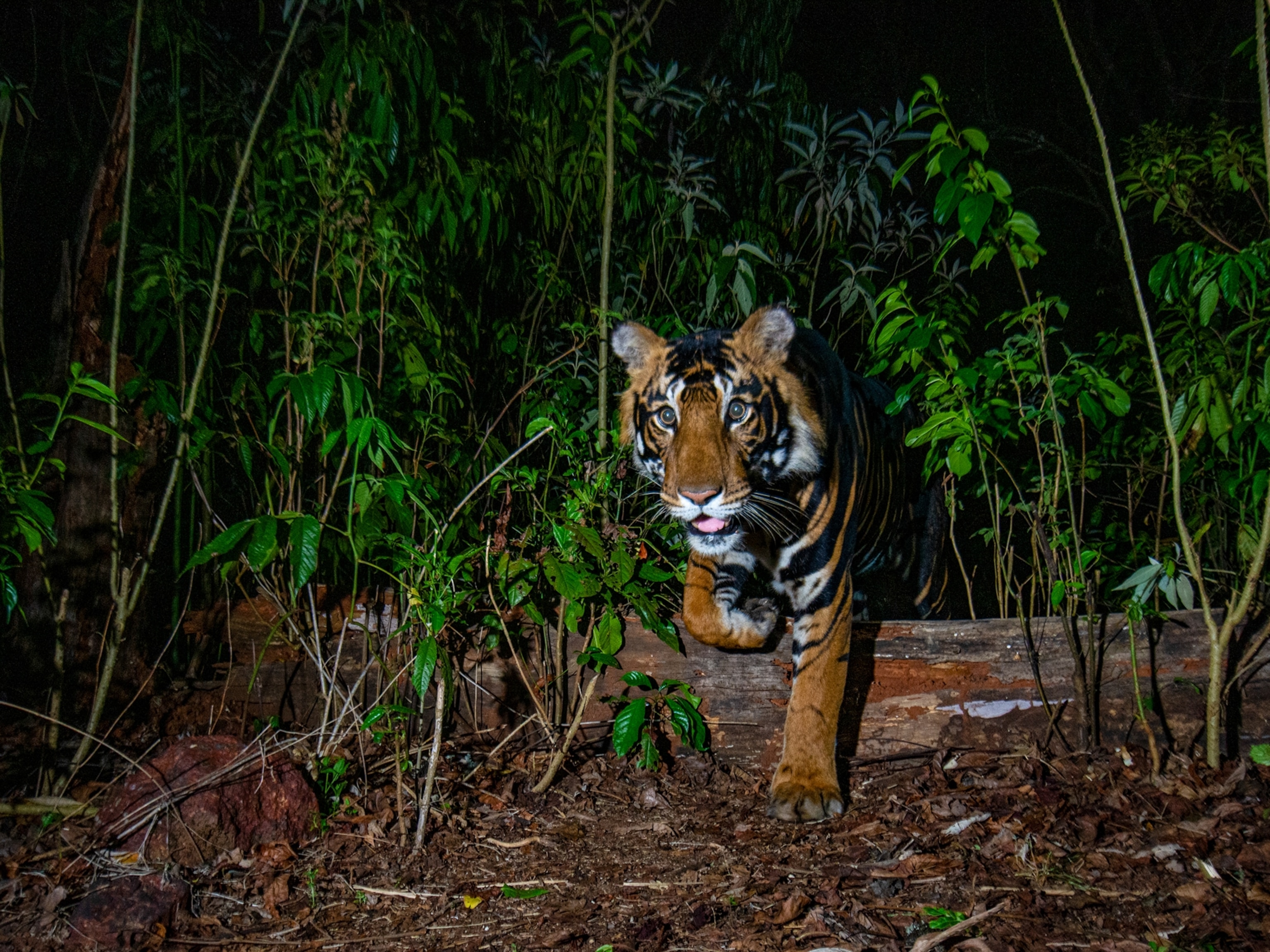Extremely Endangered Tiger Losing Habitat—and Fast
A new study renews fears that oil palm plantations could drive the legendary cats extinct.
As Sumatran rain forests fall to palm oil plantations, their critically endangered tiger may soon vanish from the planet.
There are now only two regions on the Indonesian island with enough breeding females to sustain the species, according to a new study.
“The erosion of large wilderness areas pushes Sumatran tigers one step closer to extinction,” says study leader Matthew Luskin, research fellow with the Smithsonian Institution who's based at Nanyang Technological University in Singapore.
The Sumatran is the smallest of the nine original subspecies—males rarely grow to eight feet long.
Despite successful anti-poaching efforts, the Sumatran tiger population has declined about 17 percent since 2000, to just 600 animals left in the wild. Tigers on the neighboring islands of Java, Bali, and Singapore went extinct in the 20th century. (Read how some tiger populations are rising.)

That's largely because, between 2000 and 2012, some 17 percent of prime tiger habitat was torn down, mainly for oil palm plantations, which covers nearly 30 million acres of the country.
“Sumatra has one of the highest rates of deforestation in the world,” adds Luskin, who received funding for his research from the National Geographic Society.
Disappearing Forests
Using images and videos from hundreds of infrared camera traps set up in two national parks, Luskin and his team identified individual tigers by their unique stripe patterns. This provided an estimate of how many tigers live in a given area. (Read: "How Many Tigers Are There Really? A Conservation Mystery.")
This new information was combined with data from 17 previous estimates of tiger population density.
The results revealed that tiger numbers are twice as high in primary versus degraded, or logged, forests—highlighting the extreme importance of primary forest to the survival of the species.
Luskin and colleagues' global conservation strategy for tigers depends on maintaining a network of “secure source populations” with at least 25 breeding females in suitable habitat large enough to have more than 50 breeding females.
Sixty years ago Sumatra likely had a dozen of these secure source populations across the island. Today there are just two: Sumatra’s Kerinci Seblat National Park and Gunung Leuser National Park, in the northern part of the island.
“We set up a bunch of cameras inside Kerinci Seblat National Park, but when we returned to retrieve them 10 weeks later, I was shocked to see about 50 hectares of the forest had been clearcut,” says Luskin, whose study was published December 5 in the journal Nature Communications.
An Ocean of Palm Oil
Illegal logging in Kerinci Seblat is a major threat to other species, as well. “It’s an incredibly beautiful jungle with endangered Sumatran elephants, clouded leopards, and many others species. It should be a conservation priority." (Learn about the National Geographic Society's Big Cats Initiative.)
Many local and international groups are working to preserve the forests; the Indonesian government is also on board, but needs do a lot more, he adds. In 2014, under pressure from conservation groups, the big oil palm companies adopted a no-deforestation policy.
Found in a huge array of products, from shampoo to cosmetics to chocolate bars, palm oil is one of the world's most commonly used vegetable oils. (Read about the human cost of Indonesia's palm oil plantations.)
“Flying over Sumatra is like flying over an ocean of oil palm plantations,” adds co-author Mathias Tobler, a scientist with San Diego Zoo Global. “There’s no question that it’s the main driver of deforestation."
“Safeguarding the remaining expanses of primary forests is now absolutely critical to ensuring tigers can persist indefinitely on Sumatra," Tobler says.
At the end of the day, Luskin says he’s optimistic about the future of the Sumatran tiger.
“People love tigers. They really want to protect them and it’s easier to do now that there’s less forest to protect.”




